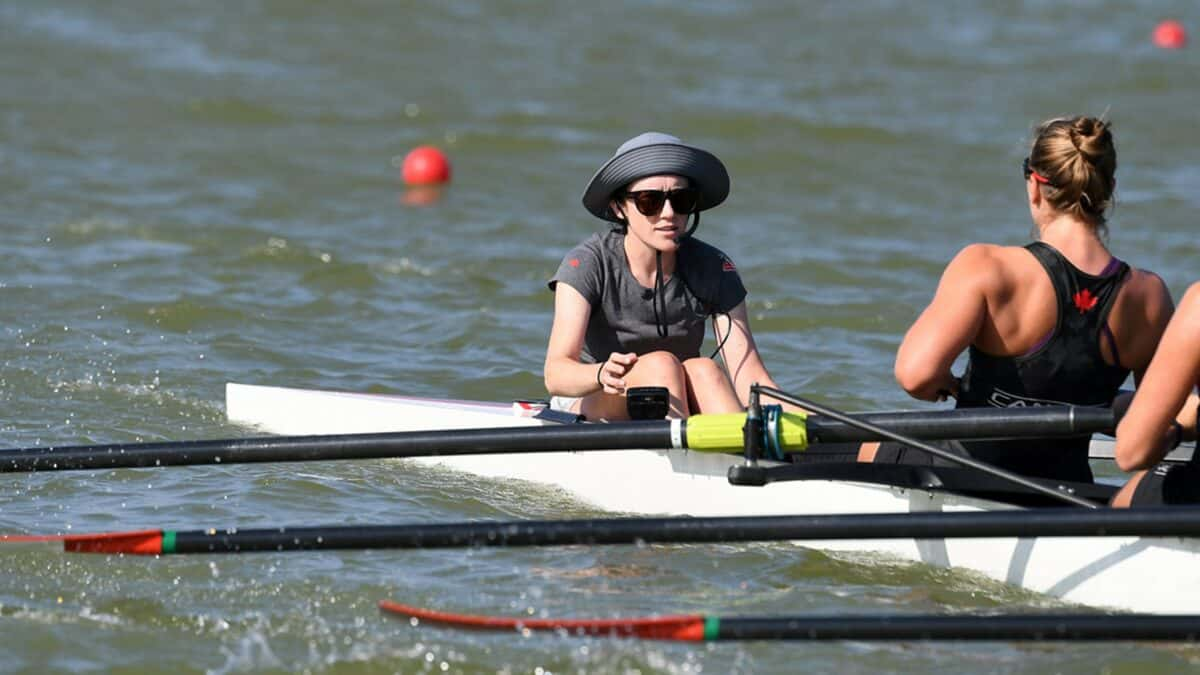
08 Apr 2019
Secret training behind rowing’s top coxswains
World Rowing talked to three of the world’s top coxswains and found out the secret to their ability to make a boat go fast.
Kristen Kit is the coxswain for the Canadian women’s eight. She has three World Championship medals around her neck and is working toward the 2020 Olympics. However, outside the boat, she is a competitive cyclist with an all-women’s elite team. Kit began cycling as a way to keep fit while coxing, but it soon became something more. Last year she began working with cycling coach Laura Brown.
“She’s exceptionally good at planning my training programme to fit my rowing and life schedule,” Kit says. I don’t usually lift weights with the women (rowers) because when they lift is my time to ride, so I did some seated power training this winter. This ended up being one of my hardest workouts every week: eight times up Mount Doug seated. The climb is 1.46km with 165m of elevation and an average grade of 11 per cent.
“This access to high level racing helps me prepare for international (rowing) racing because there is a level of focus needed. Moves or attacks happen a lot faster in cycling… you can’t hesitate. This along with understanding what the women feel in the 3rd and 4th 500m is what helps me motivate (the crew) and call a strategically strong race.”
Kit combines cycling with her coxing commitments and also attends university. To be able to do all of this, Kit gets her motivation from her rowing team.
“I always think of my team and visualise their faces, or their achievements and think to myself, “If they can do it, so can I!”
Henry Fieldman, coxswain of the British men’s eight also puts in the hours training. “I mainly do running and body weight circuits,” he says. “I got pretty into press-ups a few years ago, doing a press up challenge where on day 1 you do 1 and then add 1 every day for a year. It was a long year.”
Fieldman thinks that being fit helps him physically in the coxswain seat. “Being able to hold myself strongly in the seat means that I can concentrate more on the delivery of my calls,” he says. His teammates respect his efforts.
“I think they like seeing that their cox is fit and putting themselves through the mill a bit, albeit nowhere near as deep or as often as they do! They also like that my quads are bigger than most of theirs which definitely helps me to be competitive when we are hiking up steep hills.”
To do their own training, coxswains have to find time to squeeze in their workouts outside of regular training hours.
“I generally do my press-ups/sit ups or that sort of thing in the gym when then rowers are doing weights. I then usually do my running in the evenings after training. Occasionally I might be able to squeeze a run in during the day but there often isn’t time,” Fieldman says.
Coxswain of the United States’ women’s eight Katelin Guregian has always been active in running and biking. This year she trained for the World Rowing Indoor Championships, spending most of her time on the erg. Guregian says she prefers to work out at the same time as the team.
“I usually work out when they are on the erg – it’s a LOT easier for me to exercise with a group than on my own before or after practice. There is a reason I participate in team sports!”
Guregian says her experience erging this winter gave her renewed respect for her crew.
“I didn’t realise how hard it was to hold a specific split and a specific rate and keep breathing and try and use my legs. My teammates make it look very, very easy, but obviously, it’s not. I also learned a lot about the power of my mind. My body would tell me I was tired when I was really just nervous about the workout. On the flip side, developing positive mantras and a plan for what I would think about each 250 really helped me tackle my 2k tests,” she says.
Guregian’s teammates provide her with the support she needs. “My team is astonishingly supportive. My workouts are just for me – just for fun, body positivity, serotonin, that sort of thing – but when a workout doesn’t go well it doesn’t feel like ‘just for fun’, it feels terrible to fail. My teammates are really affirming and remind me that the accomplishment sometimes lies in simply putting in the effort,” she says.
These training efforts help make Kit, Guregian and Fieldman some of the top coxswains in the world. When the rowers finish training, the coxswain’s job has only just begun.

